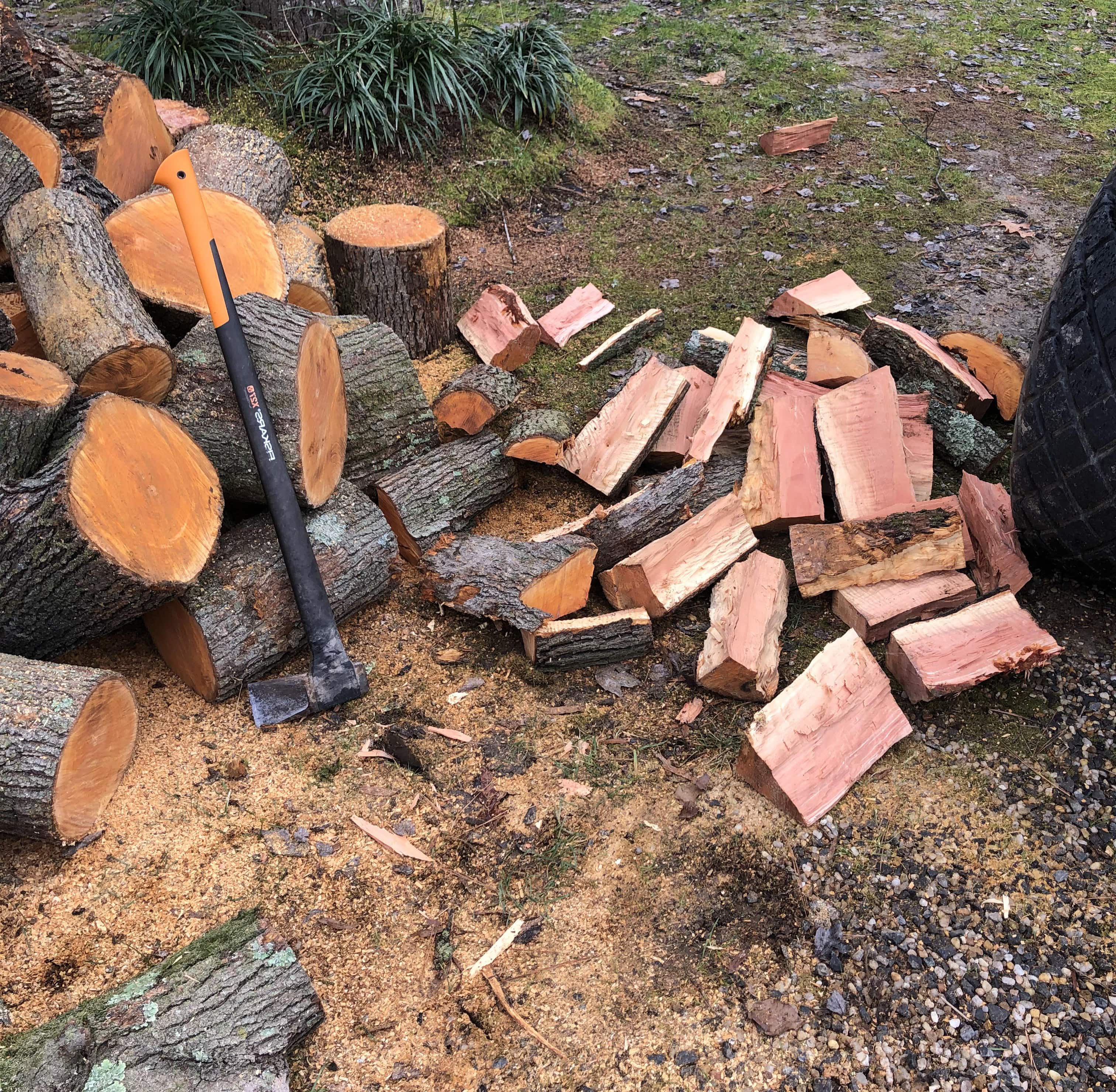The flavor of smoked food is increased by the type of wood used during the preparation. When it comes to smoking meats, the choice of wood is as crucial as the cut of meat itself. So, it is important to choose the right type of wood, as some woods can impart undesirable flavors.
So, You’ve got some cut pear tree wood, and you’re wondering if it’s a good choice for smoking. It’s normal to feel a bit unsure.
By the end of this guide, any hesitation you might have about using pear wood will be replaced with confidence. You’ll be prepared to explore the delightful flavors that this wood can add to your smoked dishes.
Can I Use Pear Wood to Smoke Meat?
Yes you can use pear wood to smoke meat. Pear tree wood is a special option for smoking food because it is not too strong and provides a sweet and unique flavor to your dishes. If you use pear wood, you might notice its distinct difference from stronger hardwoods like hickory or oak; its flavor is more similar to that of apple and cherry woods.
Among the varieties of wood used for smoking, pear is an option that might not be as commonly discussed as others like hickory or oak. It is the choice of those who primarily use fruity wood for smoking their food.
Due to its sweet flavor, Pear Tree Wood is a good choice for smoking meat. It works great with light proteins, vegetables, poultry, game birds, fish, and other BBQ meats, but it’s less suitable for very strong meats such as beef.
Why Pear Wood for Smoking?
Due to the availability of various types of smoking wood, pear wood stands out for its unique characteristics. Using pear wood in your smoker or grill does not just cook your food; it also provides a quality of coal that burns cleanly. Although pear wood requires effort to split, it is worth the effort and It is also heavy wood like oak.
This isn’t the only reason that makes pear wood a great choice for smoking. Here is a list to help you understand why you should try Bradford pear tree wood for smoking.
A Softer Alternative to Traditional Smoking Woods
The choice of wood, based on the intensity and flavor profile, can significantly alter the final outcome of the dish. Those who find the strong smoke flavor of traditional woods like oak or hickory overly intense may find pear wood to be a pleasing alternative.This wood has a softer and more refined smoking profile, which is less likely to overpower the dish.

If you are working on a chicken recipe where you use proper amounts of salt, pepper, and brine, and then cook with pear wood, you can observe that the results retain the original taste of the dish. This wood does not dominate its flavor over your dish as others like oak or walnut might.
Its quality makes it suitable for those who prefer a low intensity of smoke flavor in their dishes, but the natural flavors of the meat remain the highlight.
Versatility
The mild nature of pear wood also makes it a good choice for blending with other woods. Combining stronger woods with pear wood can create a balanced smoke profile. This blending technique allows for greater control over the intensity of the smoked food. So, that versatility enables chefs and home cooks to experiment with various flavor combinations. It opens the door to trying different combinations of woods for smoking or exploring how its smoke interacts with a range of cuisines, from traditional barbecue to more exotic dishes.
It’s not a problem whether you are working with tangy sauces, or savory rubs; pear wood smoke can add an extra layer to your food without clashing with the seasoning.
Types of Foods Best Suited for Pear Wood Smoking
Pear wood may not be suitable for every type of food, yet it is well-suited for various types. Here are the foods that are best suited for smoking with pear wood.

- Chicken and Turkey: Pear wood is well-suited for chicken and turkey. Its naturally light and sweet flavor complements poultry without masking the distinct tastes. This makes it an excellent choice for smoking whole birds or specific cuts like wings or breasts.
- Salmon and Trout: The mildness of pear wood’s flavor makes it an ideal choice for smoking fish like salmon or trout. Its light smoky taste does not overshadow the natural flavor of the fish. For those who appreciate the inherent flavors of these types of fish but wish to add an extra dimension, this type of fruity wood will appeal to them..
- Game Birds: If you enjoy camping or other outdoor activities and happen to have game birds like quail, pheasant, or duck, they can greatly benefit from the subtle touch of pear wood. Like with other meats, it adds a hint of sweetness and smoke without overpowering the meat, complementing the natural gamey taste.
- Fruits and Vegetables: Pear wood isn’t just for meats; it can also be used to smoke fruits and vegetables. This can create delicious sides for vegetarian and vegan dishes. The wood’s mild nature can add a subtle sweetness and smokiness to a variety of produce, such as peaches, apples, or peppers.
- Soft Cheeses & Pork: Cuts like tenderloin, ribs, and ham can benefit from the fruity flavor of pear wood.
Just as pear wood is ideal for a variety of foods, there are also certain types of foods that are not best suited for smoking with pear wood. These include the following:
- Beef: Beef, especially larger and tougher cuts like butt, big chunk, or ribs, often benefits from woods with a stronger flavor, like oak or hickory. The natural mildness of pear wood’s flavor may be too subtle to make a significant impact on these types of beef cuts.
- Strong-Flavored Fish: Varieties like mackerel or sardines might not be the best options for smoking with pear wood. The delicate flavor of pear wood might be overshadowed by these stronger-tasting fish varieties.
- Other foods that are not the best options for smoking with pear wood include wild game meats, heavily spiced, and marinated foods.
Must consider before smoking
Now that you know this wood is not suitable for every type of food, it’s important to understand that before using pear wood for smoking, there are several key factors to consider. These considerations not only assist you in using pear wood in the most effective way possible but also make it easier for you to achieve better results.
- Preparation: It’s most important to ensure the wood you are using is properly dried and free of any chemicals or contaminants. Try to avoid freshly cut wood as it contains moisture, which can result in unpleasant flavors and excessive smoke. Therefore, it’s advisable to allow the wood some time to season before use.
- Type of Food: It’s important to consider the type of food you are cooking, as pear wood is well-suited for lighter meats like poultry, pork, and fish, as well as certain vegetables and cheeses.
- Combining with Other Woods: Pear wood can be used in combination with various other types of wood to create complex flavors. Mixing it with other woods can balance the flavor profile of pear wood.

Experience with Pear Wood & Why You Use It
Due to its sweet flavor, I love using pear wood for smoking. Which I have tried many times with light meats. This wood is not often talked about, which is why it may not be as easily available as other smoking woods such as pecan or oak, and many people are not familiar with it. People who are not familiar with it often means it’s not available in their region. This is because we usually use the wood that is easily available in our area. For instance, if you live in Texas, you’re likely to use local woods like mesquite and post oak. So, you try to get what is easily available and at a low cost to you. If you ever visit states like California (Including Pear Capital of the World - Kelseyville, California.), Oregon, or Washington, it is quite possible to easily find pear wood in these areas. I was amazed when I learned that 95% of the pears sold in the United States are grown in these states, indicating how easily accessible pear tree wood can be obtained from there.
Nowadays, most people go to a store and buy a bag of pellets, chips, or wood in any flavor, many of which are mixed. If you ever choose one type of wood that you consider right for you, it will help you learn how to burn it, and over time, you’ll gain more experience with that wood, including its temperature performance.
